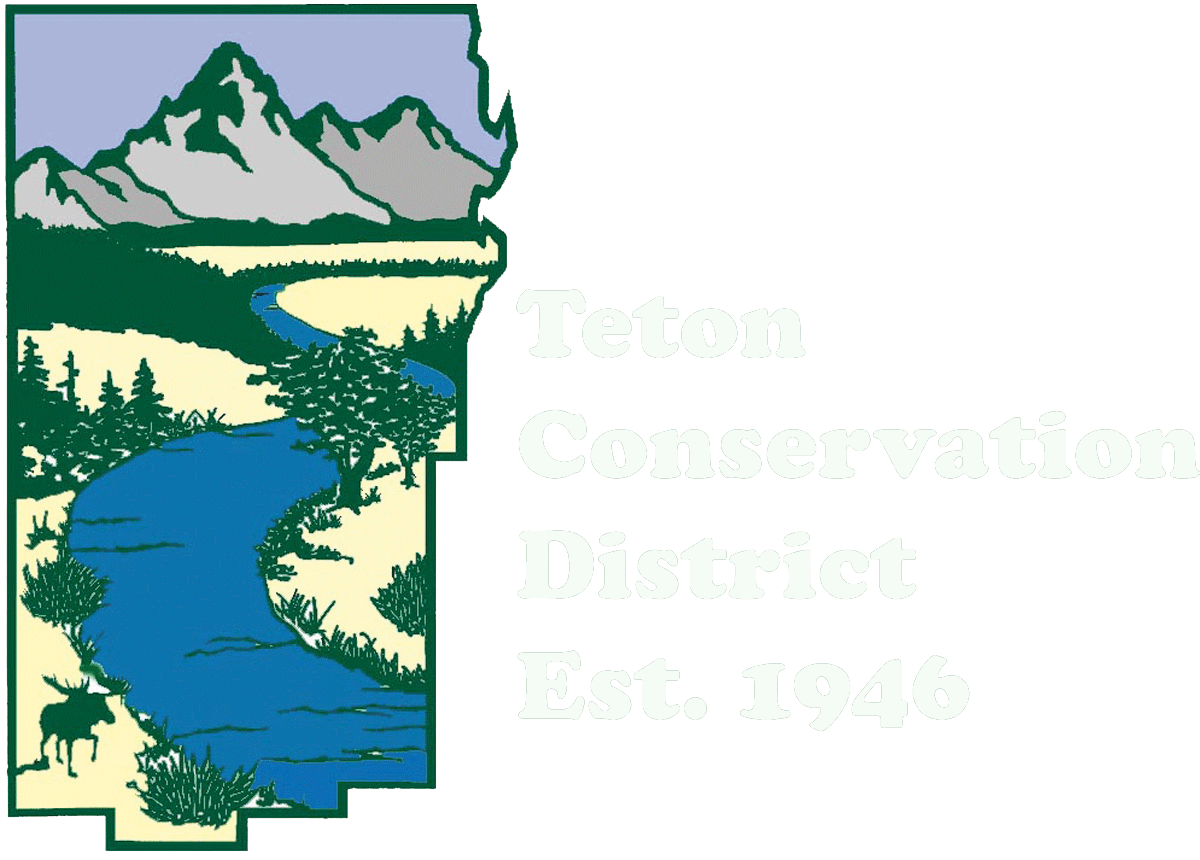By Phoebe Coburn
While out conducting annual Flat Creek sampling earlier this fall, we came across two very different mollusk shells camouflaged amid the pebbles in the streambed. One is a native species, and the other…well, it may have originated in the Atlantic Ocean.
On the left is a western pearlshell mussel, identifiable by its oval shape and pearlescent purple internal coating. The western pearlshell is one of two native mollusks found in the Jackson area. The other native is the pill clam, however “you generally don't see them because they are tiny (smaller than your pinky nail) and very fragile,” according to Diana Miller, Fisheries Biologist for the Wyoming Game and Fish Department in Jackson.
The clam on the right is a mystery. It’s not a native nor an invasive species—but rather likely ended up in Flat Creek after someone’s streamside picnic. Carlin Girard, Teton Conservation District’s Water Resources Specialist & Associate Director, will occasionally find the empty shells of store-bought clams in Flat Creek while out conducting water quality or macroinvertebrate sampling. “The first domestic clamshell I found fooled me,” Carlin says, “I actually sent a picture to a lab. It makes you question your professionalism, when a lab emails you back that the sample in question likely came from Albertsons.”
Western pearlshell mussel. Photo by Carlin Girard.
Western pearlshell mussel. Photo by Carlin Girard.
Though the clam mystery is intriguing, it pales in comparison to the story of native mussels. They are ecosystem engineers; they filter water and bioaccumulate chemicals. Living up to 100 years old, these miraculous little creatures are known as the “liver of the river” for their aptitude for cleaning water. They also fuel the food chain by absorbing and then depositing nutrients for other creatures in the bottom of the river to consume. The way they travel and reproduce is also fascinating—native mussels co-evolved with fish. The mussel reproduction cycle includes a larval stage in which the microscopic larvae attach themselves to a host fish’s gills and fins, hitching a ride upstream and enabling the otherwise sedentary species to travel between watersheds.
Once they do arrive at their permanent home, you might call them a stage 5 clinger! Mussels have been the focus of material scientists for years, as they attempt to replicate the aquatic adhesive abilities of these marvelous mollusks. Within three minutes, mussels can begin attaching themselves to virtually any type of underwater surface. Proteins secreted from their foot form threads and plaques that rival the strength and durability of the strongest human-made glues.
But, an estimated 70 percent of freshwater mussel species in North America are either extinct or imperiled. All sorts of human activities have harmed mussels over the past century, including pollution, river impoundment, habitat degradation, decline of host fish populations, and unregulated exploitation (before plastic, mussels were often harvested for shirt buttons!). And now, freshwater mussels are facing a pandemic of their own. Listen to this recent Science Friday segment on a virus that is decimating many freshwater mussels.
If you’re now a mussel fanatic like me and want to learn more, check out this Wyoming Game & Fish Department report on freshwater mussel surveys in the Bear and Snake Rivers.
Invasive Mussels
You’ve probably heard the phrase “Don’t Move a Mussel.” Not all mussels are native. Zebra and quagga mussels are invasive species of concern and we definitely do not want them in our waterways. Both of these mussels originated in eastern Europe, but are established throughout the U.S. and cause ecologic and economic destruction. In the Great Lakes, zebra and quagga mussels have also been associated with avian botulism, killing tens of thousands of birds. Both of these invasive mussels typically grow to about the size of a fingernail and kill native mussels by attaching themselves to the shells of native species—essentially suffocating them. They are also prolific breeders and eaters, outcompeting native species. Over short distances, zebra and quagga mussels are often spread between waterways by the movement of recreational boats that have not been adequately cleaned, drained, and dried. They can live for 3 to 5 days out of water. What can you do? It’s pretty simple really, 1) Clean, 2) Drain, and 3) Dry your boat before using it in another waterway.
Zebra and quagga mussels. Photo by Bureau of Reclamation.
Zebra and quagga mussels. Photo by Dave Brenner, Michigan Sea Grant






